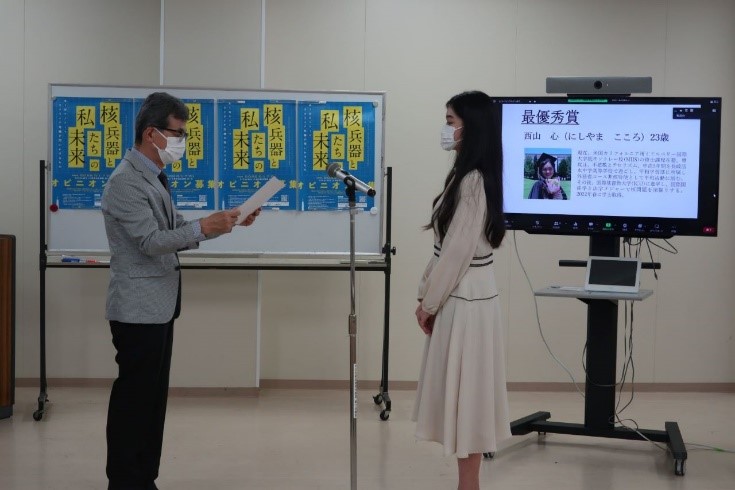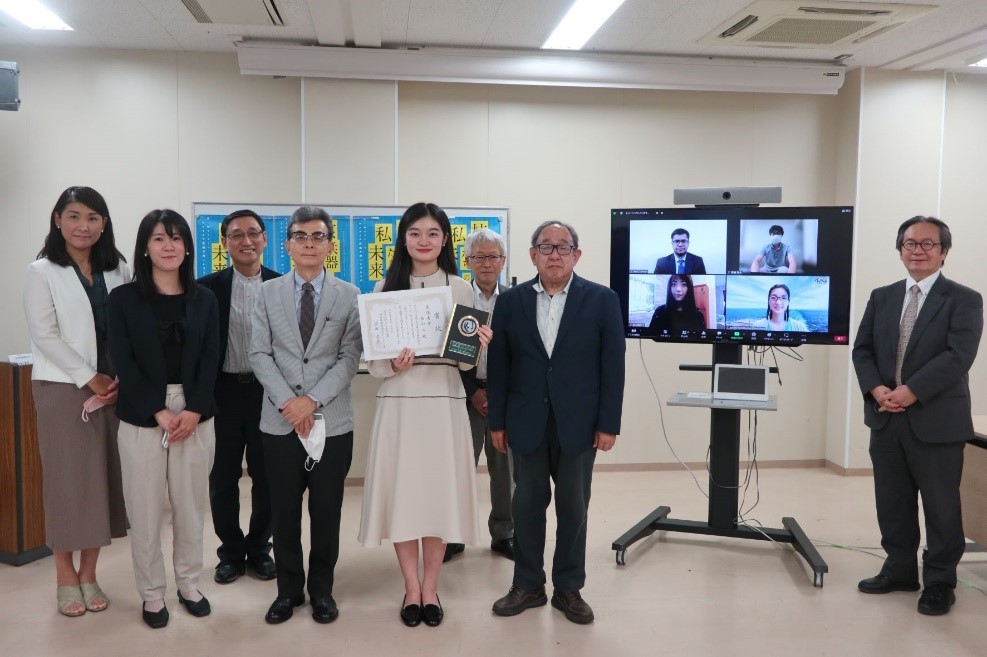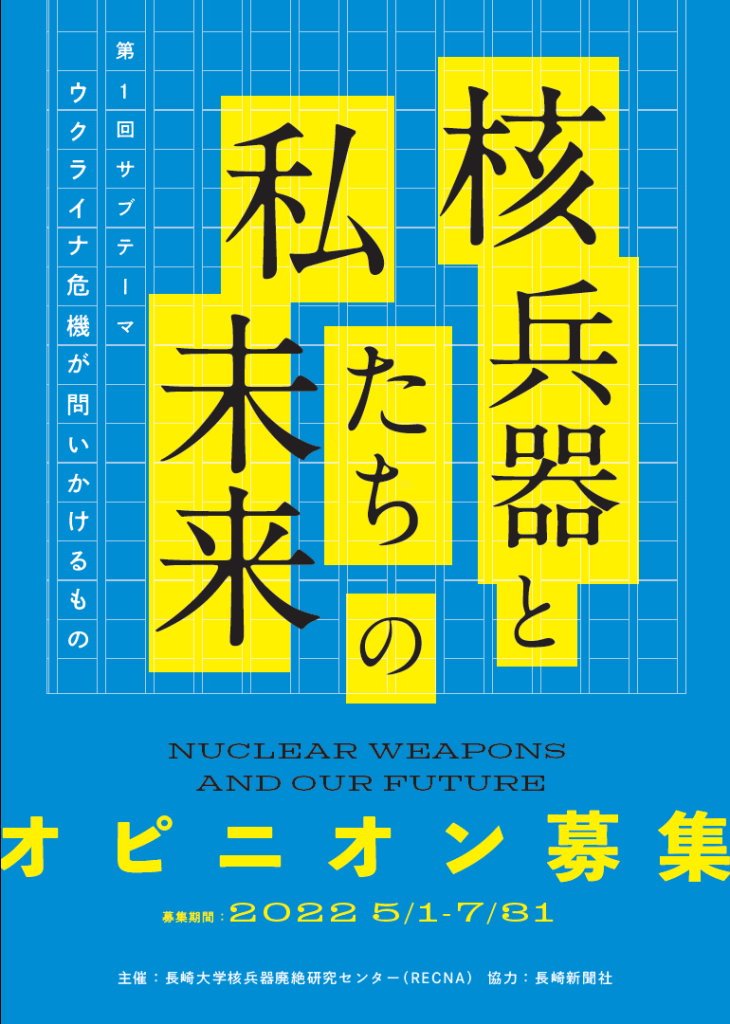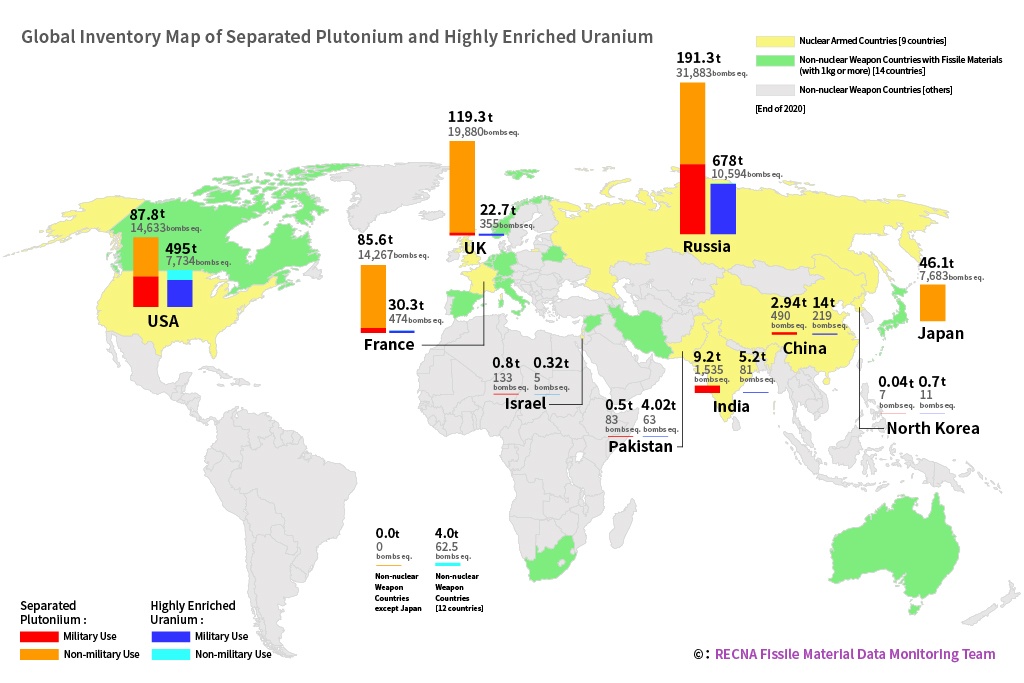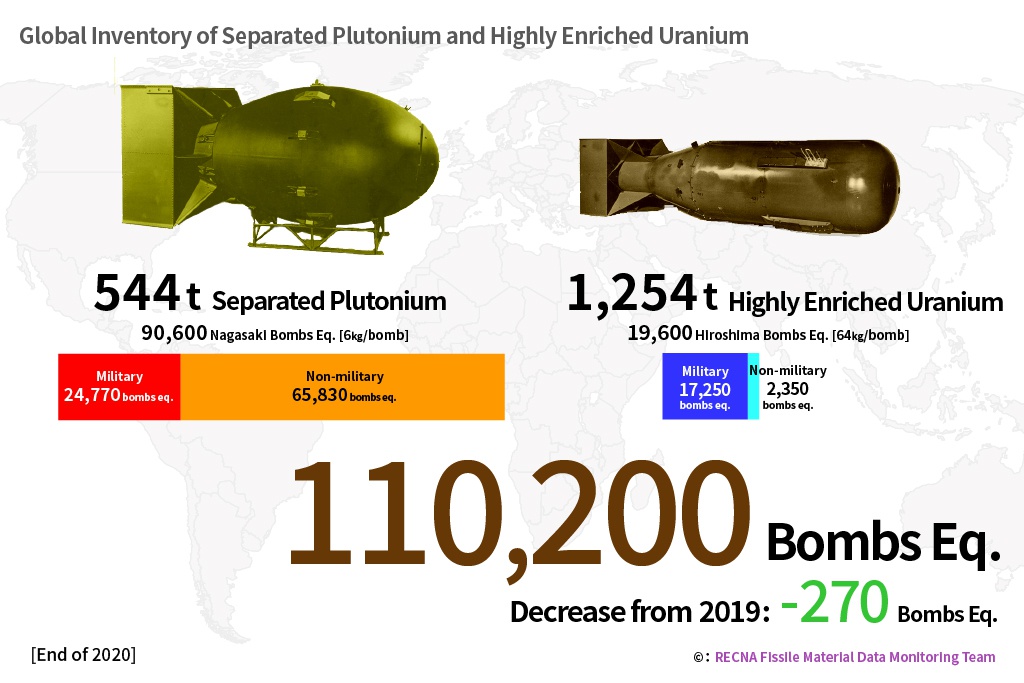2022年7月11日
Dr. Masao Tomonaga, Visiting Professor of RECNA, gave a speech at the First Meeting of States Parties to the U.N. Treaty on the Prohibition of Nuclear Weapons in Vienna on June 22. The manuscript provided by the author is posted bellow.
Hibakusha Story by a Nagasaki Hibakusha
Masao Tomonaga
Honorary Director, Atomic Bomb Red Cross Hospital in Nagasaki
[ Japanese Translation ] [ UN Web TV 01:16:35~ ]
I am a Nagasaki hibakusha encountered the second atomic bomb at 2.5 km from the hypocenter. I was 2 years old. I survived in a crushed Japanese wooden house from which my mother then 20 years old took me out of the broken house. Our area was soon burnt out, getting into completely flat field.
I have no memory of this disaster I encountered. I had no acute symptoms and grew up normally. When I became a high school boy it was the time when leukemia took place at high incidence especially among young Hibakusha. This makes me anxious, I decided to become a physician. I entered Atomic Bomb Disease Institute, Nagasaki University in 1968, since then I continued my research for over 45 years. I observed high incidence of leukemia until 1970ies and the cancer of various organs then followed and continued even until now. Some hibakusha are developing second and third cancers. Thus, the cancer occurrence covers whole life of Hibakusha. Four years ago, finally, I myself suffered from prostate cancer and I’m now under chemoradiotherapy. Thanks to this modern therapy I am enjoying now good health.
We hibakusha never had a calm period relieved from the long-lasting anxiety of cancers and other diseases. We have overcome always such atomic bomb-related obstacles to re-construct our life.
Recent statistics shows an increased incidence of heart attack among aged hibakusha, that is myocardial infarction. Atomic bomb radiation may induce genetic damages, that is DNA damage, to induce not only cancers and leukemia but also cardiovascular disorders. Whole life of hibakusha can be described as a non-stop train, slowly progressive deterioration of their health during their struggle to reestablish their family and houses, that is a resurrection for new life after the bombing. Some hibakusha lost their parents or siblings who were also hibakusha due to cancers, for female hibakusha segregation was severe in finding their partners. Such segregation was especially severe in early period of 20 years after bombing, but later decreased after most hibakusha could establish their own families.
Children born to hibakusha and their parents then encountered a special type anxiety that they might develop malformation or cancers due to genetic transmission from their parents. Such anxiety has been enhanced all the way until now because of the lack of scientific evidence for genetic transmission although animal experiments had often reported positive clear results. Recently my school Nagasaki University Atomic Bomb Disease Institute established a new molecular technique to prove genetic transmission of radiation-induced genetic abnormalities from fathers’ sperm cell and mother’s ova cells to their children. This technique is called whole genome sequencing. The first trial of this molecular analysis using three pairs of high-dose exposure parents and their children ended in negative results. This technique might be the last and determinative one to draw a conclusion in this genetic matter of atomic bone radiation on human being. Our hibakusha population is in the final stage of constant shrinkage. In their final stage of hibakusha life they were very happy to see TPNW finally established in 2017 and got into power in 2021. However, we hibakusha has deeply disappointed to the fact 9 nuclear states and over 30 states which depend on nuclear weapons of allied states, especially Japan as only atomic bomb affected nation in the world is being protected by the nuclear umbrella from the allied nation, USA. We feel very sad for our country Japan depends on the nuclear weapons: We are crying.
We feel very sad to see this dilemma and high wall we need to overcome to realize a nuclear-free world before all hibakusha die and disappear from the world. Before leaving our life as hibakusha, the first human being encountered the first and second atomic bomb attack would like again to say the bombings were indiscriminative without prewarning, during work time for detonation, the selection of two cities as targets were suitably populated to examine the effect of atomic bombs on human beings, We ask world citizens to understand our life seriously. Especially we would like to pray for not seeing the genetic radiation effect over to our descendants.
Finally, I again emphasize that TPNW states parties must give strongest pressure to the nuclear weapon states to sign and join TPNW. Taking the opportunity of the coming NPT Review Conference TPNW groups must negotiate with nuclear weapon states and other nuclear dependent countries such as my country Japan to start dialogue and to have a track 1.5 meeting with non-nuclear weapon states and international NGOs such as ICAN. Hibakusha NGOs in Nagasaki recently established new organization with peace-promoting groups to restart our campaign to talk with those citizens who live in the nuclear weapon states and give lessons on our experience in 1945 and subsequent long-term consequence of antihumanitarian effects on human beings.
I stop my talk here, thank you for attention.



